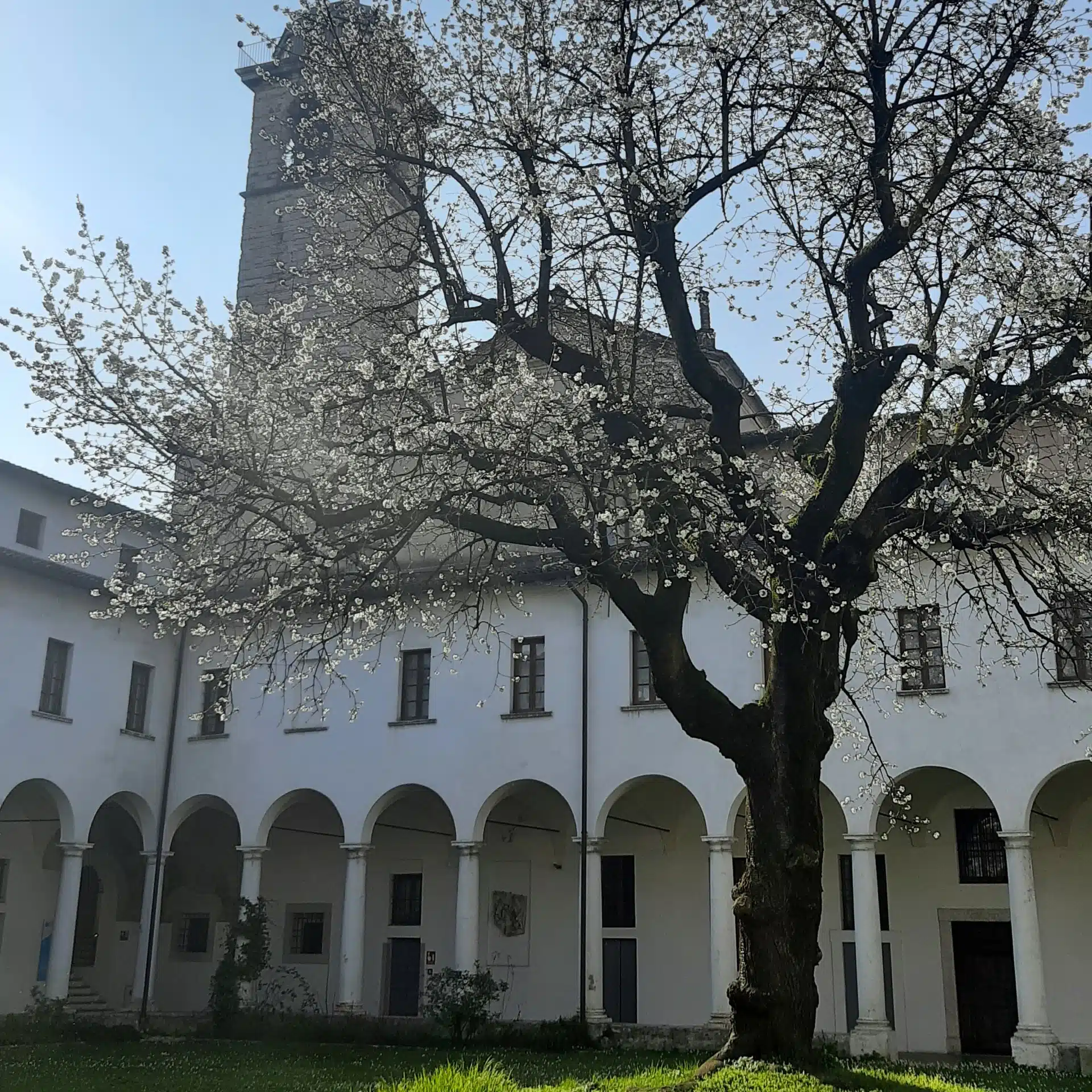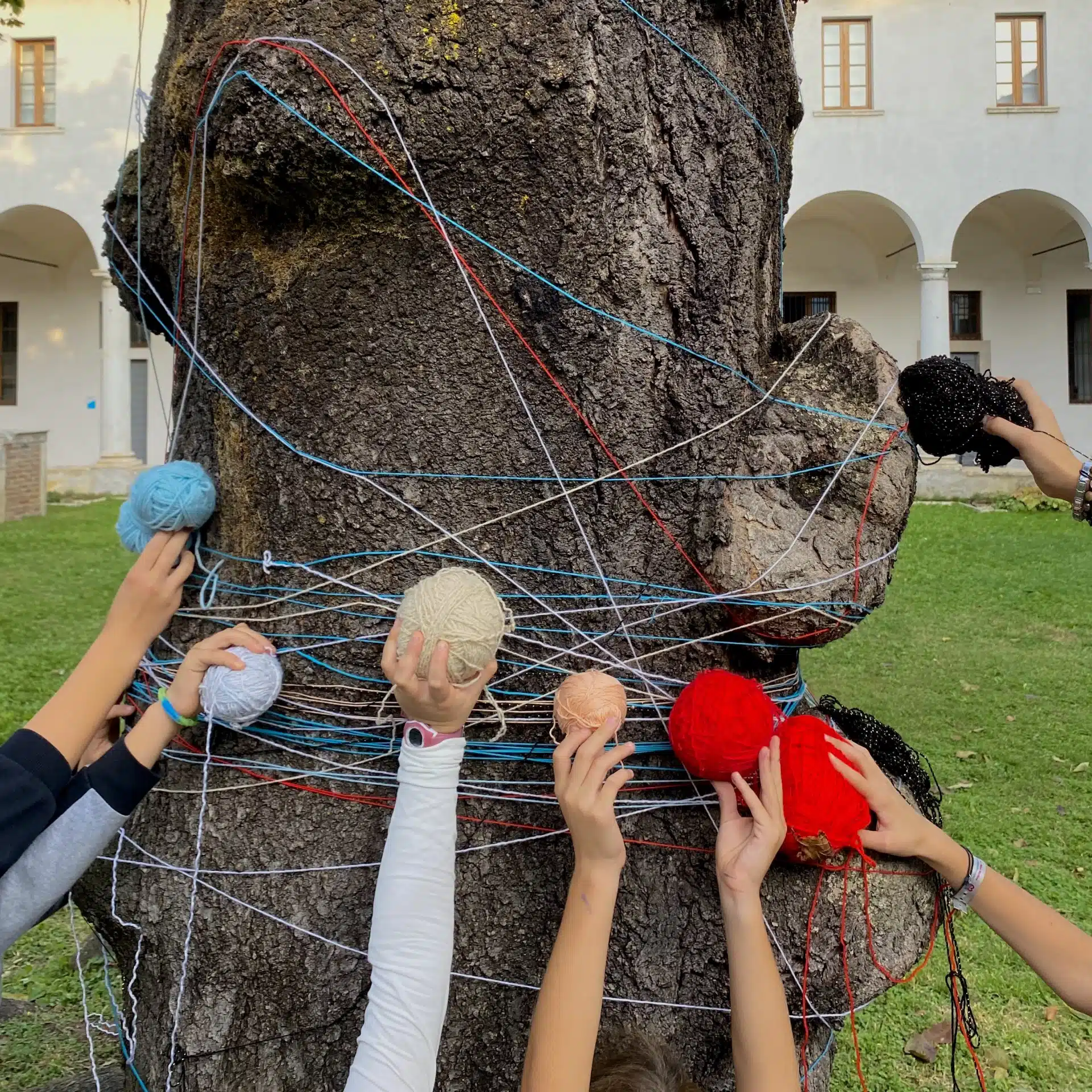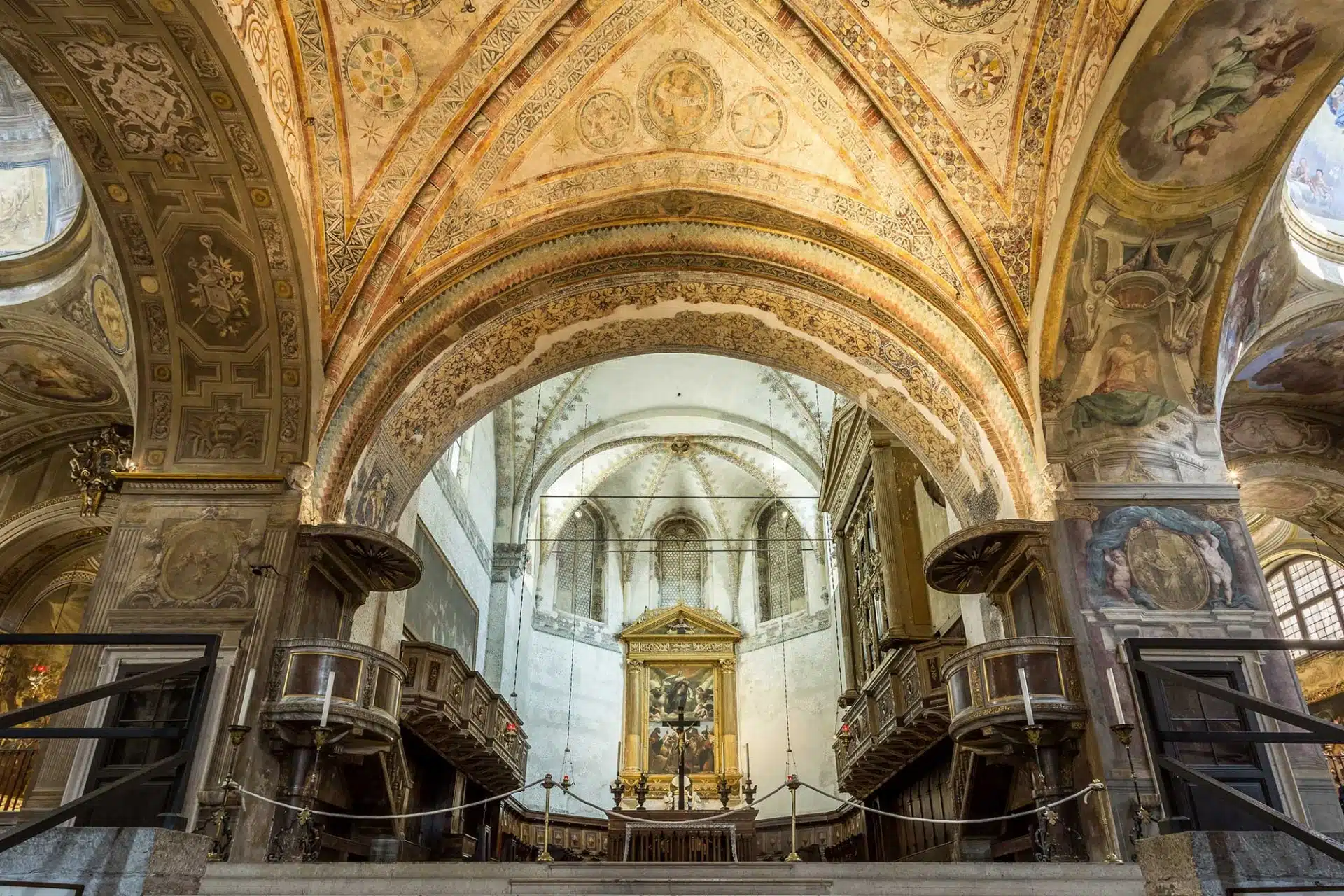Piviale di Comero
Autore: Manifattura francese (tra il 1750 e il 1760) Taffetà broccato - 139x283 cm Provenienza: Comero, chiesa parrocchiale di San Silvestro papa -
Il Piviale di Comero proviene dalla chiesa parrocchiale della frazione più alta del paese di Casto, in Valle Sabbia.
L’abito è stato realizzato a telaio ed è di taffetà, un tessuto più leggero e frusciante della seta che era molto in voga nel Settecento. Le dimensioni ridotte della pezza supportano l’attribuzione ad una manifattura straniera, quasi sicuramente francese.
Il motivo decorativo del piviale è definito a meandro, perché si sviluppa in verticale in un andamento sinuoso, a tratti serpentino.
Si tratta di un lunghissimo merletto bianco che si avviluppa e si attorciglia su sé stesso. È coronato di vari serti fioriti e fogliati, a tratti definiti da interventi di variopinte trame di seta broccate.
Nelle anse create dal nastro emergono preziosi bouquets di dalie, margherite, ranuncoli e rose disposti a scacchiera, a loro volta coronati da piccoli serti di bacche. I loro colori vivaci spiccano vivacemente dall’azzurro accesso del taffetà.
La doppia ripetizione dell’ornato lungo tutta l’altezza del tessuto collocano il Piviale di Casto tra il 1750 e il 1760, cioè nella fase iniziale del motivo decorativo qui descritto.











